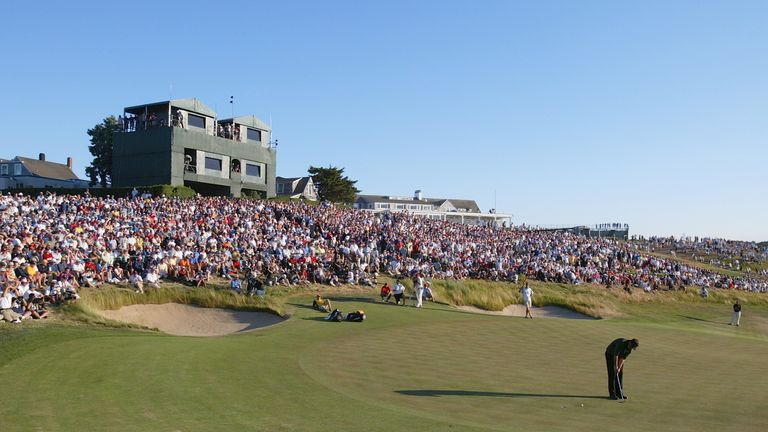US Open: Five biggest controversies in major tournament's history
Monday 18 June 2018 12:00, UK
The US Open is no stranger to controversy and following a dramatic weekend at Shinnecock Hills, we look at five of the biggest talking points from previous tournaments.
1979, Inverness Club
Lon Hinkle's best finish at the US Open was when he finished tied for third in 1980, but it was the year before that he wrote himself into the history books of the tournament.
Walking onto the eighth tee in the first round at Inverness Club, Hinkle spied an unconventional route to tackle the par-five.
Aiming at a small gap in the trees, he drilled his drive down the 17th fairway, which took a considerable chunk of yardage off the hole, and made a birdie four.
Hinkle's playing partner Chi Chi Rodriguez followed Hinkle down the 17th, as did a number of players after him, prompting officials to act.
Overnight, the chairman of the greens committee paid for a large tree - to be known as The Hinkle Tree - to be installed to plug the gap and prevent further shotcuts.
1998, Olympic Club
Challenging pin placements are nothing new in the US Open and neither are improvised interventions by players in their battle with the course. At Olympic Club in 1998, the back-left position of the cup on the 18th of the Lake Course was devilish in its placement and ruined several cards.
Payne Stewart had the championship lead when he walked onto the final green on the second round, happy to have an eight-foot putt for birdie.
Stewart tapped the right to left down the hill and could only watch in horror as it rolled past the cup - and kept rolling, and rolling, until it finally came to a stop 25 feet away.
He wasn't the only one to suffer. Tom Lehmann four-putted the 18th, while in a precursor to Phil Mickelson's penalty on Saturday this year, Kirk Triplett watched his putt trundle back down the slope to his feet, leading him to turn his putter into a backstop for a two-shot penalty.
2004, Shinnecock Hills
Tournament organisers were obviously not happy with how well the players were coping with the course in 2004.
After two rounds, there were 11 players under par and the USGA's response was to stop watering the course.
But by the final round, they'd lost control of the bone-dry, rock-hard greens and were forced to start watering them between groups - especially the seventh - in a bid to make them playable.
"It was a great deal embarrassing," said former USGA executive directer Frank Hannigan after a day in which the scoring average was 78.7, with only Phil Mickelson and winner Retief Goosen finishing under par.
2015, Chambers Bay
Jordan Spieth would win his second major of the year at Chambers Bay in 2015, beating Dustin Johnson by a stroke, but the week was dominated by the condition of the putting surfaces.
Only eight players finished the week under par, but many players felt it wasn't a fair test on the greens, with Colin Montgomerie calling them "very, very poor" before finishing 13-over for the week.
Ian Poulter and Sergio Garcia were also vocal about the state of the greens, with Justin Rose saying "it was like outdoor bingo out there at times".
The most memorable quote came from Sweden's Henrik Stenson, who needed 38 putts in his second round.
"It's borderline laughable," he said. "At some of the greens and some of the pin positions, when we're actually almost better off plugged in a bunker than being on the top of a ridge… and it's pretty much like putting on broccoli."
2016, Oakmont
Any hope of a quieter event the following year disappeared at Oakmont.
When Johnson's ball moved on the fifth green before he had approached it during his final round, the American paused to ensure he was correct in his interpretation of the ruling.
Having initially been absolved of responsibility of moving his ball, an hour later the USGA told Johnson the incident would be reviewed upon the end of his round - surely an unwanted distraction for a player chasing his first major championship and leading to farcical scenes of no-one knowing the leader's score.
In the end, Johnson was penalised, but he finished three shots clear of the field and the rule was changed after the tournament.








